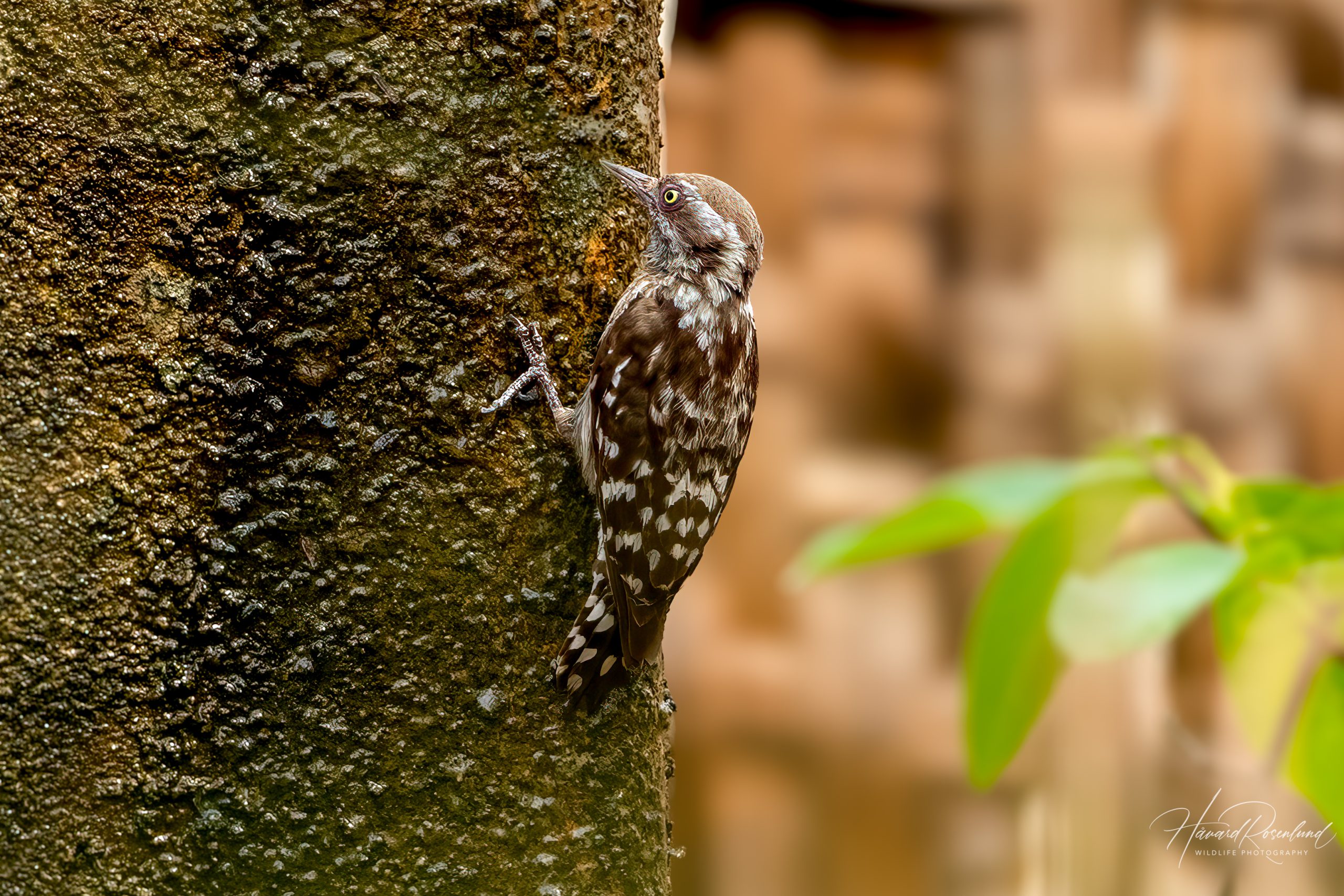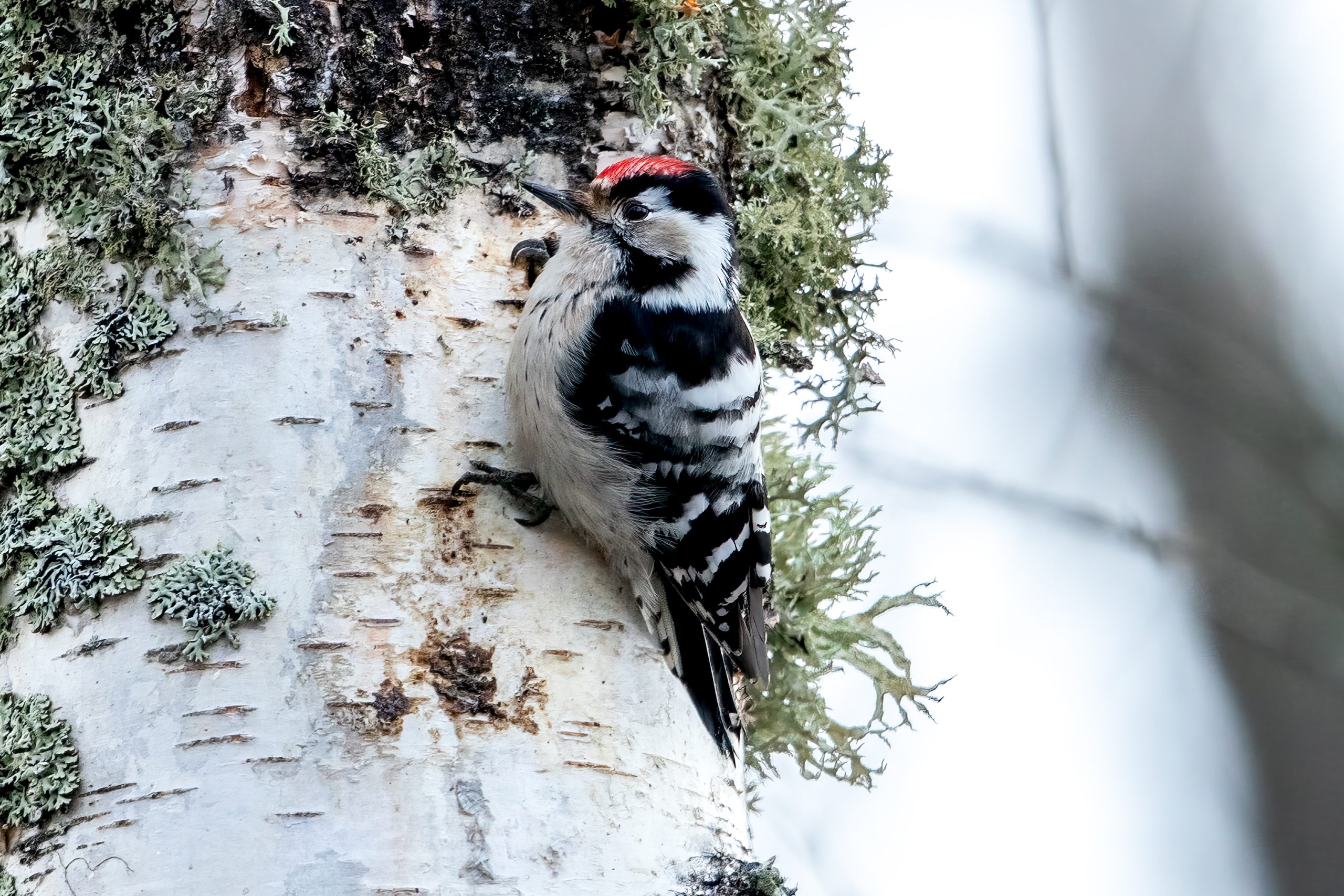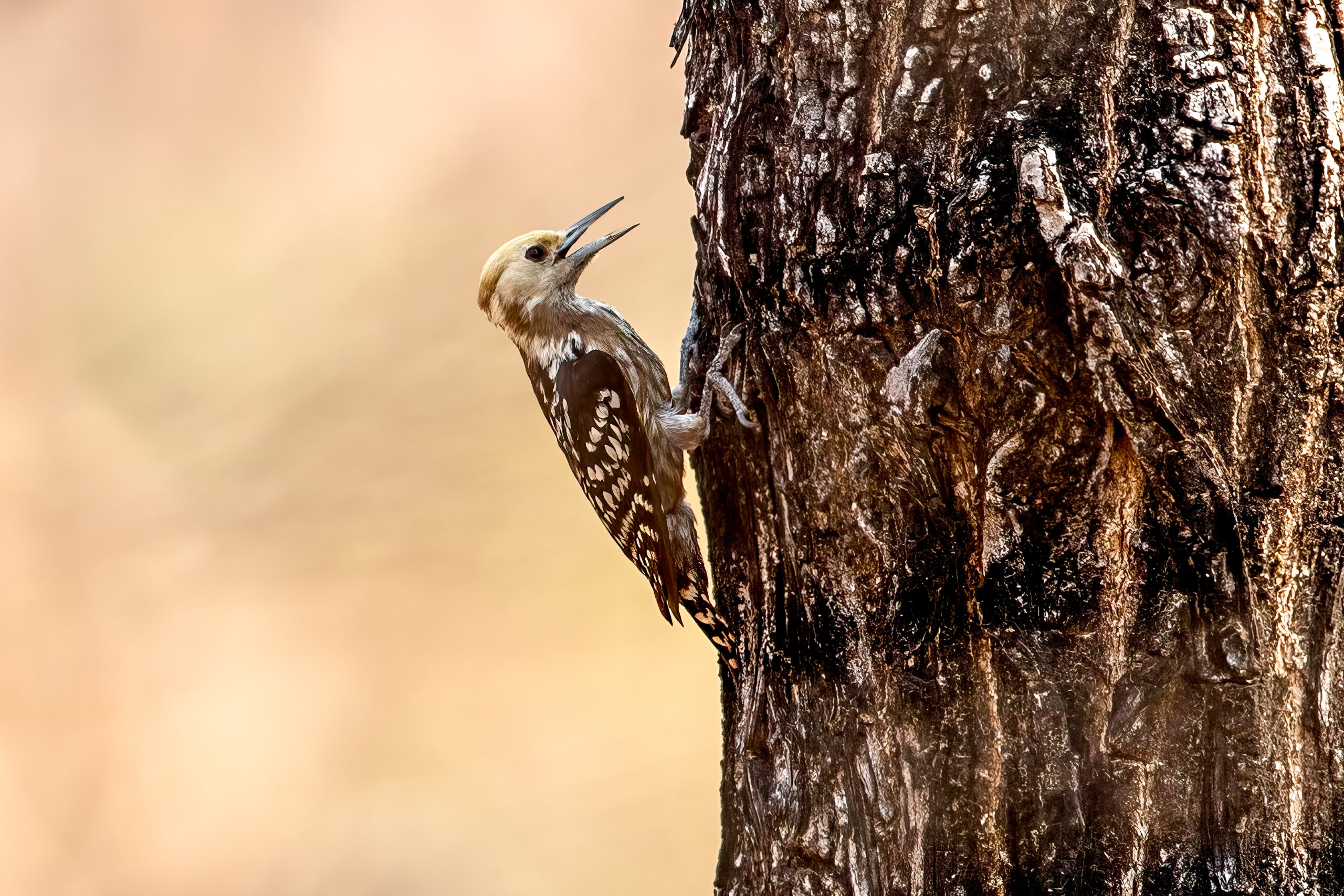Brown-capped Pygmy Woodpecker
(Yungipicus nanus)
Description
The brown-capped pygmy woodpecker (Yungipicus nanus), also known as the Indian pygmy woodpecker, is a small woodpecker found across the Indian subcontinent, including regions of India, Nepal, and Sri Lanka. It is one of the smallest woodpecker species, measuring about 13 cm (5 in) in length and weighing around 13-17 grams (0.46-0.60 oz). It is characterized by its small size, brown cap, and dark brown upperparts with white spots in a barred pattern. The underparts are pale with light streaking, and it lacks the bold facial markings seen in some larger woodpecker species. Males typically have a small reddish patch on the nape, while females do not.
Diet & habitat
The brown-capped pygmy woodpecker is an adaptable species that thrives in a range of habitats, including dry deciduous forests, secondary growth, orchards, and even suburban gardens. It primarily feeds on insects, particularly ants and beetles, which it forages from the bark and branches of trees. This species is known for its methodical foraging behavior, often seen spiraling up tree trunks or pecking at the bark to uncover insect larvae. Unlike larger woodpeckers that excavate deep into the wood, the brown-capped pygmy woodpecker tends to pick insects from the surface of the bark or within shallow crevices, using its small and relatively weak bill.
Nesting
The breeding season of the brown-capped pygmy woodpecker typically spans from February to May, coinciding with the onset of warmer weather in its range. During this time, pairs are often seen together, engaging in courtship displays that include mutual tapping on branches and synchronized movements.
This species nests in tree cavities, which the pair excavates together. The nest hole is usually located in a dead or decaying branch, at a height of 2-10 meters above the ground. The female lays about 3 to 5 eggs, which are incubated by both parents. The incubation period lasts approximately 11–14 days, and the chicks are altricial, requiring substantial parental care. The fledging period occurs after about 20–25 days, during which time the parents continue to feed and protect the young.
Status
The brown-capped pygmy woodpecker is currently listed as a species of least concern by the IUCN. It is widespread and relatively common throughout its range, facing no immediate threats of extinction. However, like many forest-dwelling birds, it is potentially vulnerable to habitat destruction, particularly in regions where deforestation is ongoing.







